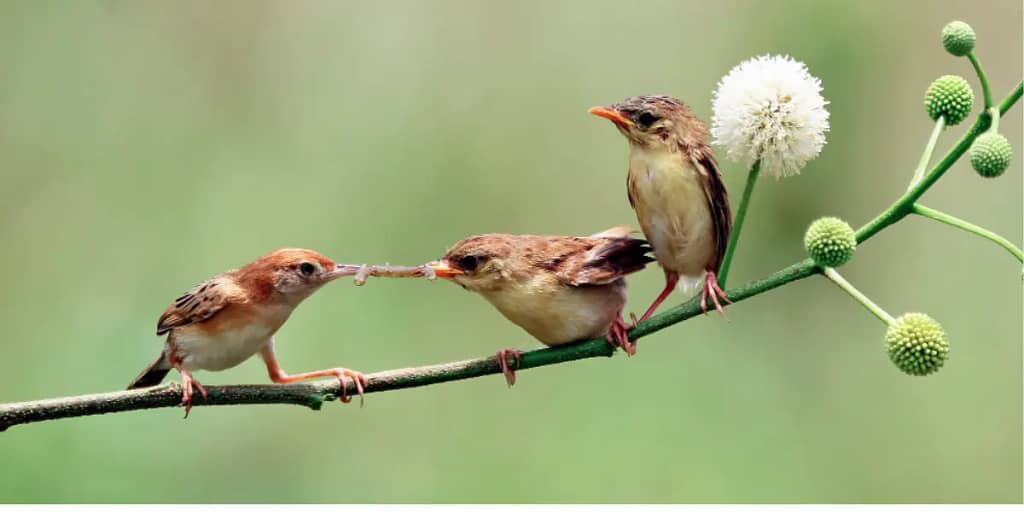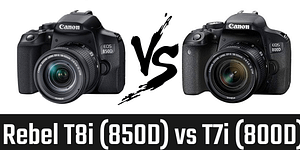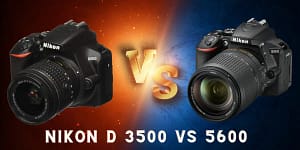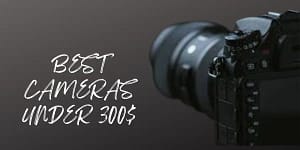Last Updated on: 4th January 2023, 03:16 am
Observing wild birds in their natural habitat has recently gained popularity. While most birders observed bird activity, others framed their aesthetic within the context of the bird’s movement.
Bird photography is one of wildlife photography’s most challenging and rewarding fields. Birds are often shy, hard to find, and quick to become elusive after you’ve seen them.
The key to success is patience and a telephoto lens. For a beginning bird photographer, getting a camera that won’t break the bank and allows you to develop your skills simultaneously is better.
In this article, you will be able to find the best bird photography camera for you. We’ll tell you about the essential features for a good bird photography camera and help you find cameras that fit your needs.
Best 7 cameras for bird photography
Here are our top recommendations which might compensate for your requirement.
1. Panasonic LUMIX GH5 – best professional camera for bird photography
I have travelled to some of the world’s remotest and most scenic locations to photograph birds in their natural environment. With the Panasonic LUMIX GH5, I captured the bird’s pictures and shot them, and I found a realistic view of them which I was founding.
It seems as though I have found the perfect bird photography camera that can teach me various techniques and provide professional skills to capture avian images.
I wanted to record bird documentaries at a professional rate, and the camera offered the best video quality at 20.3MP. It shoots 4K 60p/50p clips with excellent motion correction and decelerates the footage within my workflow without sacrificing detail.
Specifications
| Screen Size | 3.2 inches |
| Image Stabilization | Yes |
| Item Dimensions | 5.83 x 7.56 x 6.14 inches |
| Item Weight | 1.60 lbs |
| Optical Sensor Resolution | 20.3 megapixels |
| Optical Zoom | 1x |
| Photo Sensor Size | Micro Four Thirds |
| Video Capture Resolution | 2160p |
| Viewfinder Type | Electronic |
Why I recommend
The camera’s Depth Defocus mechanism allowed me to capture quick action and track it with the newly created motion detector, so it is ideal for professional video production requiring precise picture monitoring or high-resolution broadcasting to auxiliary codec devices.
Through this unique tool for grading colours, I achieved next-level color manipulation. Combining the AF drive with a maximum readout rate of 480 frames per second, I can achieve ultra-high-speed Auto Focus in as short as 0.05 seconds for spur-of-the-moment shots.
Why I don’t recommend
In my experience, the autofocus on this camera was not very good. I found it slow and inaccurate, especially when tracking moving subjects. I had high hopes for this feature, given the rave reviews the GH5 has received.
Pros
- Excellent image quality
- Fast and accurate autofocus
- Built-in stabilization
- Robust and weather-sealed construction
- Fast autofocus
- 4K video recording
- 6K Photo mode
Cons
- Limited native lens selection
- No in-body stabilization for 4K videos
- Limited battery life
2. Nikon D780 – best compact camera for bird photography
Throughout the years, my love of photography has grown as I have captured images that have appeared in several publications, educational displays, and calendars and received essential photography awards.
My photographic opportunities in the Loss Angelos, which includes a forest and wildflower meadow, include stunning portraits and free-flight images of bird of prey breeds from around the world.
With its compact casing, it has all the charm I was looking for to capture bird action photographs. The camera’s compactness and sturdy body design cater to novices by enabling them to shoot in adverse conditions, from dusty to swampy, while having all the fine-tuned control settings available and suggested as the best camera for birding on a budget.
Specifications
| Item Dimensions | 5.65 x 2.99 x 4.55 inches |
| Item Weight | 1.57 lbs |
| Screen Size | 3.2 inches |
| Continuous Shooting Speed | 7 frames_per_second |
| Focus Type | Auto Focus, Manual Focus |
| ISO Range | 100-51200 |
| Optical Sensor Resolution | 24.5 megapixels |
| Video Capture Resolution | 2160p, 1080p |
| Viewfinder Type | Optical |
Why I recommend
Using the time-lapse function, I added depth to my photos, adjusted the maximum aperture settings for shallow depth of field, and shot the birds at various pitches using the tilting function of the touch screen.
It offered exceptional low-light performance by allowing me to shoot in total silence at full resolution without sacrificing stunning shot quality at an astonishing 12 frames per second (FPS), which is ideal for framing birds.
A high-level SLR camera’s image quality is one of the essential characteristics that practically every professional photographer cares about. With an enhanced 24.5MP resolution acquired by the FX-Format image sensor, the EXPEED 6 image-processing power has transformed my photographs.
Why I don’t recommend
After shooting for two months, my shutter began to malfunction. Black lines will suddenly be in my photos since the shutter gets stuck between shots.
Pros
- 24.5-megapixel full-frame sensor offers excellent image quality-
- Fps shooting speed is great for capturing action shots
- The tilting the LCD screen makes it easy to take pictures at different angles
- Built-in Wi-Fi allows you to share your photos and videos easily.
Cons
- Some people may find the camera’s menu system confusing
- No 4K video recording capabilities
3. Fujifilm X-T4 – best mirror-less camera for bird photography
I have been passionate about photographing birds since I was a teenager. I’m constantly on the lookout for new creative ideas to discover. Reading bird photography blogs helps me understand the habitats of birds.
The most effective way to satisfy my restlessness is to engage in bird-watching and photography. For this, I require a mirrorless camera. As the premier mirrorless camera for bird photography, the Fujifilm X-T4 is ready to snap the perfect shot of my following birds at all times.
The impressive panoramas of birds can be captured with a sharp focus on this camera’s ISO sensitivity range of 80-52000 without framing texture. As the most spectacular camera for shooting bird stills and videos from the sky, I recommend this masterpiece to all bird photography fans seeking the most incredible creativity level.
Specifications
| Item Dimensions | 3.65 x 5.3 x 2.51 inches |
| Item Weight | 1.34 lbs |
| Screen Size | 3 inches |
| Optical Sensor Resolution | 26.1 megapixels |
| Optical Zoom | 1x |
| Photo Sensor Size | APS-C |
| Continuous Shooting Speed | 15fps |
| Image stabilization | Yes |
| Video Capture Resolution | 2160p |
| Viewfinder Type | Electronic (OLED) |
Why I recommend
Even in difficult bird photography conditions, I could share your photos and videos easily at-paced to candid, thanks to the camera’s high-end image stabilizer. I eliminated any blurriness from the pictures I took of the birds on all five axes using the 6.5 stops of picture stabilization.
The camera’s fast 15fps shooting rate allows me to keep the scene stable. Due to the camera’s compact, lightweight design, fast mechanical shutter, and accelerated hybrid autofocus, I could capture crisp and clear pinpoints for up to 600 frames.
Why I don’t recommend
While taking photographs, the camera shut off due to overheating even though I was in a dark room with a temp of around 74 degrees F, so there was no direct sunlight, nor was it too hot or humid; this made me suffer a lot.
Pros
- X-T4 is a powerful camera that offers excellent features and image quality
- 26.1-megapixel sensor for high-quality images
- 4K video recording
- In-body stabilization for steadier shots
- Fast autofocus
- Bluetooth and wi-fi connectivity which make it easy to share
- Ultra-sonic vibration sensor cleaning system
Cons
- No built-in flash
- Lowest shading focus which sometimes makes the picture undefined.
- Expensive
4. Sony Cyber-shot DSC-RX10 Mark IV – best bridge camera for bird photography
I enjoy bird photography because it allows me to communicate with birds and recall fond memories. A Sony Cyber-shot DSC-RX10 Mark IV bridge camera is superb for capturing birds.
It has been my camera for two years, and I keep it mainly because of the large maximum aperture combined with the F2.4-4 aperture range of the optical zoom lenses.
The camera was able to record spontaneous bird behavior without the use of any intermediaries. Taking photographs of birds was intended to pique my interest in the portraiture of birds.
Through the camera lens, I captured macro images of the birds with a narrower depth of focus and a blurry background that appealed to the eye.
Specifications
| Item Dimensions | 5.22 x 3.7 x 5.02 inches |
| Item Weight | 2.32 lb |
| Screen Size | 7.5 inches |
| Optical Sensor Resolution | 20 megapixels |
| Optical Zoom | 25x |
| Video Capture Resolution | 2160p |
| Viewfinder Type | Electronic |
| Image Stabilization | Yes |
| continuous shooting | 24fps |
Why I recommend
By setting the electronic shutter to a speed of 1/32000 seconds fast, I could avoid distortion and capture the action without being distracted. Using the camera’s 600mm lens range and 25x optical zoom, I could emphasize the feathers’ most delicate details.
When framing macro photographs of birds singing in a meadow, the quickest AF acquisition time was employed, resulting in more accurate macro images. Combined with the 20.1MP image processing sensor, the BIONZ X image processor has enabled me to capture high-quality photographs at any ISO sensitivity and changeable light situation with reduced noise.
A key feature to highlight is the camera’s outstanding low-light, low-noise performance and Optical SteadyShot, significantly reducing blur caused by camera shake.
Why I don’t recommend
Auto lens positioning and zooming don’t work very often, and there you go, this exotic bird I’ve just seen on the trail. The camera didn’t take the shot I wanted when I zoomed quickly and captured it.
Pros
- High-end is point-and-shoot with some impressive features
- Zeiss lens with an f/2.4 aperture and a 24-200mm zoom range.
- Gives you excellent image quality and low-light performance.
- Great for getting close-up shots or zooming in on distant subjects
- 20.1 megapixel, which provides you with detail and images
- wireless connectivity which makes it easy to share
- 4K video recording available
Cons
- The flash cannot be seen at wide angles with the hood on.
- With the still buffer on, it is not possible to start recording video.
5. Canon EOS 80D – best starter camera for bird photography
For my storyboards and photo books, I always looked for photos of birds with a strong emotional impact. Choosing the right camera for bird photography is a matter of placing a high value on mobility.
As I scanned the sky, I saw birds flying fast while keeping my eyes open and following my instincts to capture the moment. Among the most remarkable cameras for beginner bird, photography is the Canon EOS 80D, which is compact and robust simultaneously.
Despite the excitement in the air, my bird action flicks show a stunningly bright image thanks to the Full HD 60p chop, and Movie Servo AF keeps the focus even when the action intensifies. I consider it the best camera for bird photography for beginners.
Specifications
| Item Dimensions | 7 x 9.6 x 5.3 inches |
| Item Weight | 1.61 lbs |
| Screen Size | 3 inches |
| Continuous Shooting Speed | 7fps |
| Focus Type | manual-and-auto |
| ISO Range | 100-12800 |
| Max Resolution | 24.2 megapixels |
| Optical Sensor Resolution | 800 megapixels |
| Optical Zoom | 1x |
| Photo Sensor Size | APS-C |
| Video Capture Resolution | 1080p |
| Viewfinder Type | Eye-level SLR |
| Image stabilization | Yes |
Why I recommend
Since the ISO range of 100 to 16000 allows me to capture bird brushstrokes in low-light conditions, I was able to achieve high-quality images right out of the box due to the 24.2MP APS-C CMOS image sensor.
The DIGIC 6 image processor is to blame for these extraordinary skills, as it serves me up snaps at sharp speed without losing any details of the illustration. I captured all the bird’s views with fine focus at a speed of 7 frames per second, thanks to the camera’s Dual Pixel CMOS autofocus.
Due to the built-in wi-fi technology and NFC, I could take photographs alongside this masterpiece’s ability to share wirelessly.
Why I don’t recommend
There is no perfect battery life with this camera, so if you’re planning to use it for an extended period, you will need to buy an extra battery.
Pros
- The image sensor is excellent, providing plenty of detail and low noise levels
- A great camera for both professionals and enthusiasts, with fast performance and a robust feature set
- Able to produce stunning images quickly.
- Possible to shoot up to 7 fps with continuous autofocus.
- It’s got a great autofocus system that tracks subjects well
Cons
- It offers 4K video recording (at 24/25/30p), but it doesn’t support 60p like some of its rivals.
- Single SD card support could not be replaced with any other.
6. Sony A7III – best full frame camera for bird photography
Birds land in the sea at a point where the waves smash, emerging from the sea. As a dedicated bird photographer, I took several photos, but the ones with the Sony A7 III better show the strategic position and activity.
By staying at these locations with the best full-frame camera for bird photography that birds frequently visit, I can capture many beautiful pictures. Because the vast majority of my photos were wide-angle in nature, I sought a lens that would share a common goal, and I didn’t let my fists get in the way when I took photographs of the birdie region.
By fast adjusting the focal points between them, the multi-selector would allow me to identify all of them and capture the most elegance broad view of birds. The aesthetic appeal of these beautiful birds was mine as soon as I pressed the shutter halfway out.
Specifications
| Item Dimensions | 5 x 3.88 x 3 inches |
| Item Weight | 1.44 lbs |
| Optical Sensor Resolution | 24.2 megapixels |
| Optical Zoom | 1x |
| Photo Sensor Size | Full frame(35mm) |
| Video Capture Resolution | 2160p |
| Viewfinder Type | Electronic |
| Image stabilization | Yes |
| Continuous shooting | 10fps |
Why I recommend
The fast hybridization with 673 phase-detection points spread across a broad region, coupled with the 4D focusing acquisition speed, has dramatically improved the ultimate details of the images I have captured by up to 93 percent, resulting in the fast hybridization.
Another aspect that influenced my choice was the silent filming pace, which was ten frames per second since even the slightest bit of noise could be silenced in this photo opportunity.
I can now capture more significant summits in real-time with the new full-frame CMOS sensor with a back-illuminating feature and other sophisticated image enhancement features, making it ideal for various situations.
I am equipped with the precision, reliability, and agility it gives me to catch glimpses of birds that fly so fast that it is a once-in-a-lifetime for me.
Why I don’t recommend
It is complicated to reach the shutter button when you are holding the camera with one hand, and the menu system is confusing and challenging to navigate when you are trying to use the camera.
Pros
- Sony a7III is a full-frame camera with a large sensor.
- Great for low-light photography and for capturing fine details.
- Makes it great for action photography or for shooting video
- Battery life on the Sony a7III is excellent; you can expect to get over 1000 shots per charge
- The Autofocus system on the Sony a7III is very advanced, and it tracks moving subjects well
- Weather sealed construction.
Cons
- The LCD screen is too small and difficult to see in bright light.
- The autofocus system is selective and often inaccurate
7. Panasonic LUMIX FZ-80 – best point-and-shoot camera for bird photography
A successful bird shot can be taken either in direct sunlight, shade, fog, or with a flash; however, it is not easy to stand under a tree and wait for the right time. My patience paid off when I finally got the right shot.
As a bird photographer, I shoot with Panasonic LUMIX FZ-80s, the most excellent point-and-shoot cameras for birds on the market today. I kept the camera in my backpack to capture a sudden photograph.
With this incredible device, I can take photos of birds that will live in the history of my camera, as I’m very attached to them. It provides a wide-angle focal length of 24mm and a super-zoom range of 30x; the camera enables me to capture all the views I enjoy most, the birdsong that feeds my soul.
Specifications
| Item Dimensions | 4.69 x 5.13 x 3.71 inches |
| Item Weight | 1.36lbs |
| Optical Sensor Resolution | 18.9 megapixels |
| Screen Size | 3 inches |
| Optical Zoom | 60x |
| Video Capture Resolution | 2160p |
| Viewfinder Type | Electronic |
| Image Stabilization | Yes |
| Includes External Memory | No |
| Continuous shooting | 30fps |
Why I recommend
Featuring a 20.3MP MOS image sensor with Venus engine image processing, this camera can take spectacular photographs with minimal motion distortions, even in low-light conditions. It provided me with better visual algorithms and a quick shooting speed to cope with a difficult situation.
As a result of the 100% coverage, I can almost always be confident that everything I see through the viewfinder is the same as what I see on the LCD monitor, allowing me to capture the most impressive moments involving the bird at 30 frames per second while reducing the possibility of cropping later in the setup.
Some sophisticated features complement its point-and-shoot simplicity in the Panasonic LUMIX FZ-80, the company’s longest-running pocket-friendly camera series.
Why I recommend
My landscape shots showed distant trees and creatures leaning bizarrely to one side because of the 20mm wide angle distortion. The zoom needs clarification when using both autofocus and intelligent auto, so I had to make many attempts to get one appropriately focused.
Pros
- 4K video capabilities so that you can capture stunning video feet
- 60x optical zoom lens means that you can get up close to the subject
- The touch screen display makes it easy to navigate the camera’s menus and settings
- Camera is lightweight and easy to carry around
- Built-in Wi-Fi, so you can easily share your photos and videos with others.
Cons
- Limited manual controls
- Slow burst shooting
Conclusion
With so many cameras on the market, it can be tough to know which is best for bird photography. We’ve done the research for you and compiled a list of the seven best cameras for bird photography, so you can make an informed decision and get started on your avian adventure.
FAQs
How many megapixels do I need for bird photography?
Most people (including professional photographers) are entirely satisfied with a camera with at least 15-20 Megapixels or more, which is more than sufficient for most of them. A crop factor applies to both full-frame cameras and bodies with sensors smaller than 35mm in size.
Is DSLR or mirrorless better for bird photography?
There was a time when all professional wildlife photographers used DSLRs. However, mirrorless camera technology has advanced significantly since then, and we are seeing a growing number of enthusiasts and professionals switching to mirrorless cameras.
What equipment do I need for bird photography?
As a bird/wildlife photographer, a tripod is essential to your equipment bag. If you are going to shoot wildlife with extensive (and heavy) prime lenses, such as the 600mm lens, a tripod must provide stability and support.



